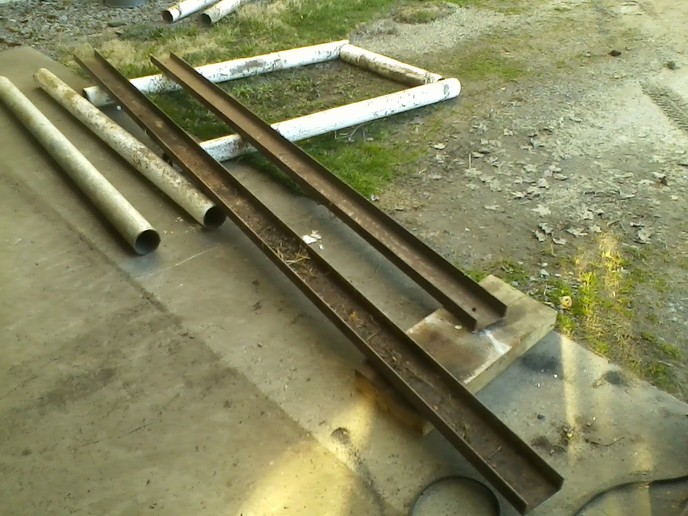lastcowboy32
Well-known Member
I have quite a bit of large diameter, fairly thick-walled pipe and about 20 feet of big C-channel. I want to make a shop hoist. I've cut the pipe to length. I need to make a few joints where I need to make a perpendicular joint with a pipe butt welded onto the pipe tangentially.
I'm hoping that the pictures come through.
One picture shows the pipe fresh off of the chop saw; so you can see the wall thickness. The white stuff is whitewash. These pipes are from some barn demolition. They were used as uprights; until the bottoms rotted out from acids on the barn floor. (manure and such)
Another shows a test cut made with the torch. Note. When I make the real cuts, it seems that I should do more grinding and wire brushing to get the old whitewash and possibly old galvanizing off of the pipe to cut more cleanly.
Another picture shows the rough layout of one side of the hoist. The longest piece is the bottom. The two pieces perpendicular to it are the uprights. The short piece between the uprights at the other end is a brace to hold the frame square.
This is what I'm thinking about. I want to use a torch to cut the butt ends roughly into the properly rounded "bird's mouth" to mate perpendicularly. I can finish the shaping with a grinder/file. Then I can weld.
How do I minimize making the joints brittle?
Will the torching make the end of the butt brittle? If so, would that be helped by torching to a rough shape and leaving more metal to grind off?
What about quenching the actual weld. Should I just let it cool naturally? Try to heat it a little? Try to cool it faster?
Maybe I'm just worrying about nothing, but...then again...maybe I should at least think about it. Dropping an engine would be sort of a disaster...ya know?



I'm hoping that the pictures come through.
One picture shows the pipe fresh off of the chop saw; so you can see the wall thickness. The white stuff is whitewash. These pipes are from some barn demolition. They were used as uprights; until the bottoms rotted out from acids on the barn floor. (manure and such)
Another shows a test cut made with the torch. Note. When I make the real cuts, it seems that I should do more grinding and wire brushing to get the old whitewash and possibly old galvanizing off of the pipe to cut more cleanly.
Another picture shows the rough layout of one side of the hoist. The longest piece is the bottom. The two pieces perpendicular to it are the uprights. The short piece between the uprights at the other end is a brace to hold the frame square.
This is what I'm thinking about. I want to use a torch to cut the butt ends roughly into the properly rounded "bird's mouth" to mate perpendicularly. I can finish the shaping with a grinder/file. Then I can weld.
How do I minimize making the joints brittle?
Will the torching make the end of the butt brittle? If so, would that be helped by torching to a rough shape and leaving more metal to grind off?
What about quenching the actual weld. Should I just let it cool naturally? Try to heat it a little? Try to cool it faster?
Maybe I'm just worrying about nothing, but...then again...maybe I should at least think about it. Dropping an engine would be sort of a disaster...ya know?





